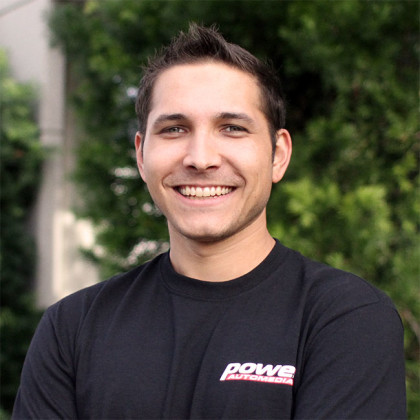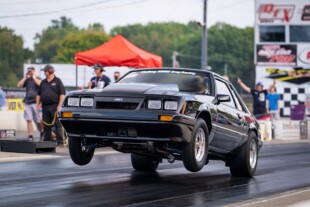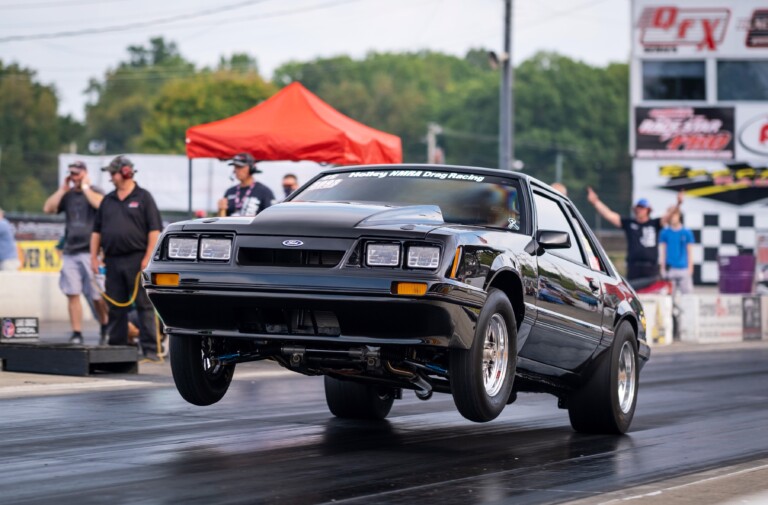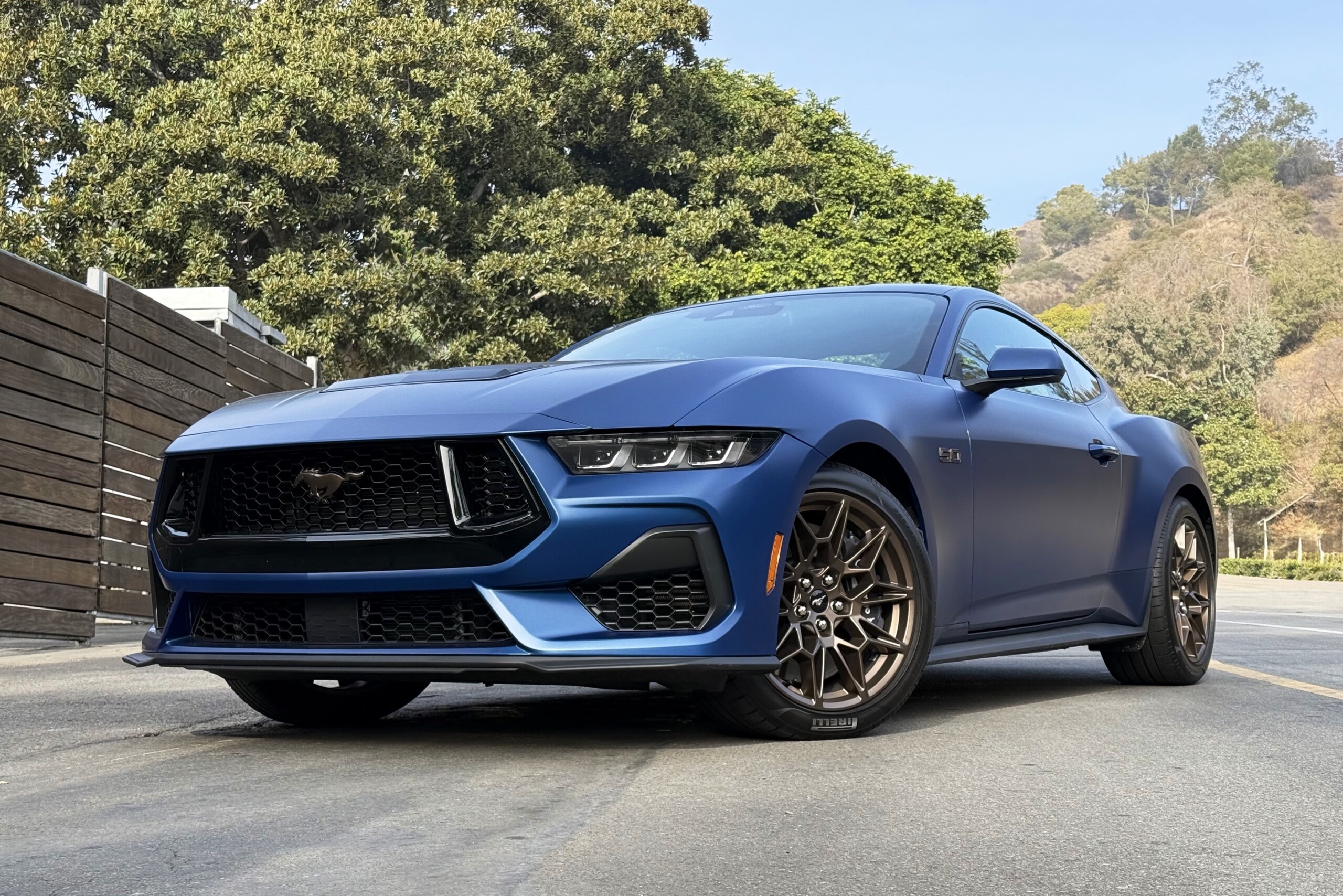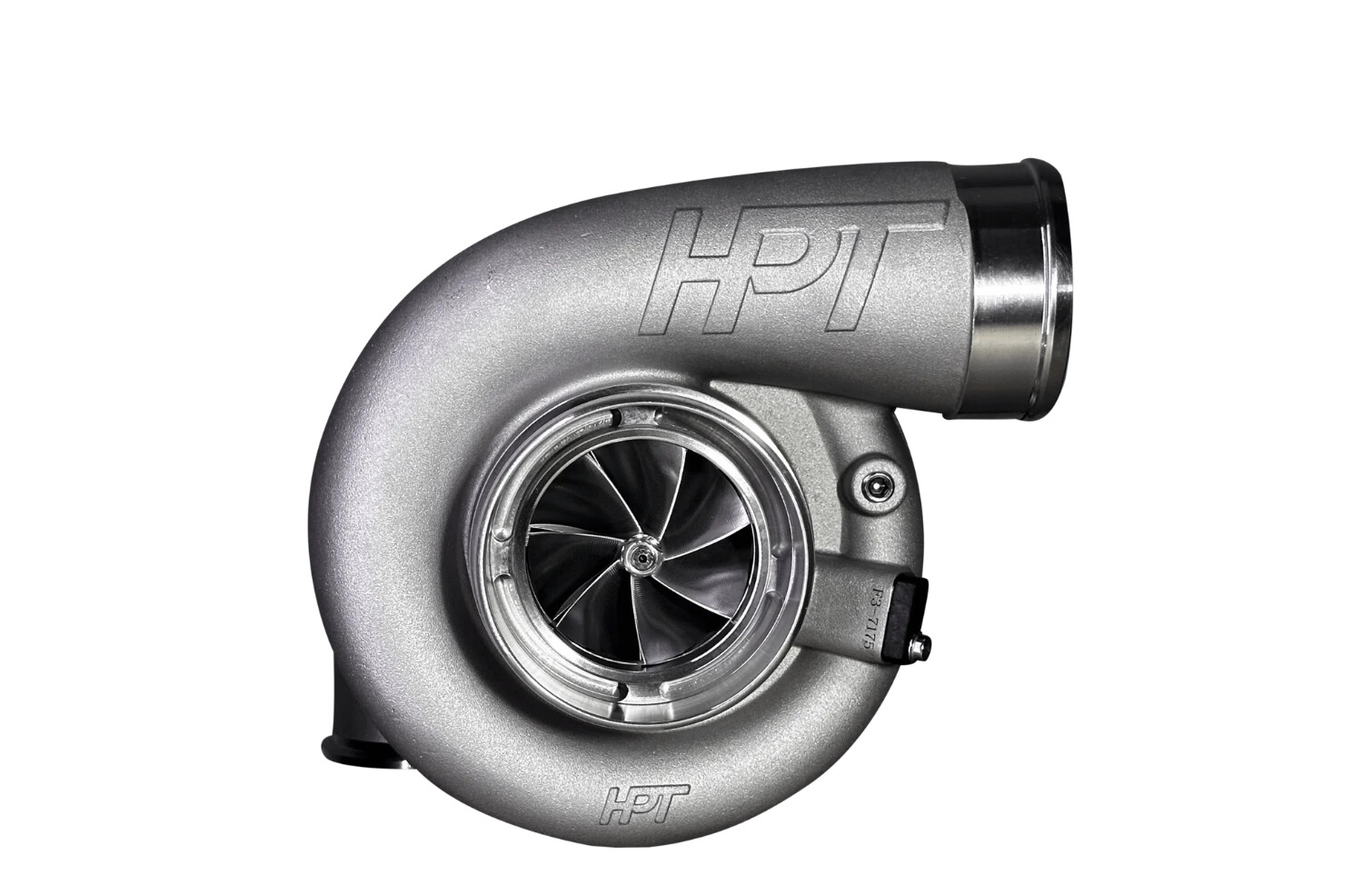Although you don’t see your suspension and the things it connects to very often, every part connected to your chassis plays a huge role in the performance, ride, and handling of your car. QA1 knows just how important this can be, and it’s part of the reason they are so thorough with all the parts they produce. Many drivers out there might think a rod end is just a rod end, but there’s a lot more to it. Rod ends have an incredibly important job, and ensuring that they are up to the task requires proper production and testing before reaching the A-okay check and make their way to your vehicle. Jeremy Beane from QA1 walks us through the stringent testing they do in order to catch potential errors in production which could cause you to lose control of your vehicle or problems with alignments.
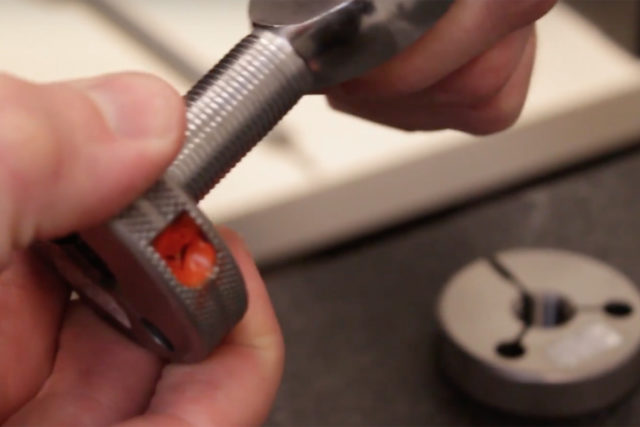
A simple “Go” or “No-Go” test is performed by screwing the rod end into a threaded tester. This identifies if the thread pitch is within specification.
The first test is to check the threads with a go or no go gauge. This is less of a gauge and more of just a metal adapter in which the rod end threads into. Although it may seem primitive, it’s extremely effective and will quickly identify if the threads on the rod end are either the wrong pitch or have rough edges. QA1 uses two of these, one fits perfectly how it’s supposed to like the suspension arm or bar that it might be screwed into. The other one is imperfect, and the rod end should not thread into it more than one and a half turns; while testing the one on video, it threads about one turn on before stopping which signifies the threads are within proper specification. Next up is verifying the bore of the ball, on the rod end. Again this simple test involves using bore pins which drop into place. Two are used, one is perfectly sized for the bore of the rod end and will slide right in; while the other pin is too large. If the larger bore pin goes into any of rod end bores, the hole is too big and it will not pass. Obviously you want one that is sized just right, as that is too small will prevent you from installing leaving you and your car stuck in the shop with parts all over. The latter of course is too big, and will allow for play in the suspension making it difficult to dial in a perfect alignment and make your race car feel sloppy on the track.
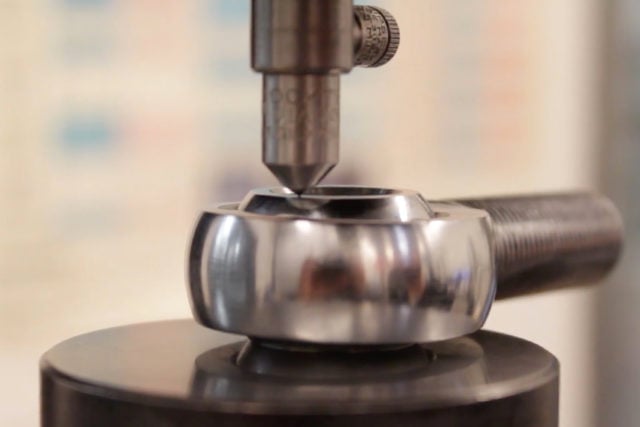
Feeling the squeeze? The Rockwell hardness tests will determine if the metal is the proper hardness.
After that, the tests are done with machines and precision instrument tools. The size of the rod end and the length of the threaded area is checked with a digital caliper. The thickness of the ball on the rod end needs to be within spec to prevent fitment problems and excessive play after installation. The threads on the other hand need to be a certain length (application specific) to allow the rod end the correct amount of adjustment. Too short and the rod end won’t be inserted enough, while too much long will exceed the adjustment range preventing you from having a perfect alignment. Using a Rockwell hardness tester, the ball and rod end are verified to be within a range for how hard the material is. Prior to the hardness test, the rod ends are heat treated and the Rockwell hardness test will prove that the heat treatment process was done successfully. One of the coolest tests comes at the end, using a tensile strength pull tester where QA1 actually breaks the rod end. The purpose of this is to receive a graph which shows how the rod end handles stress, how it breaks when subjected to insane loads, and after how much pulling or weight is placed on it. Once they know how the rod end breaks, they’ll know if this group of rod ends are ready to be shipped out to customers.
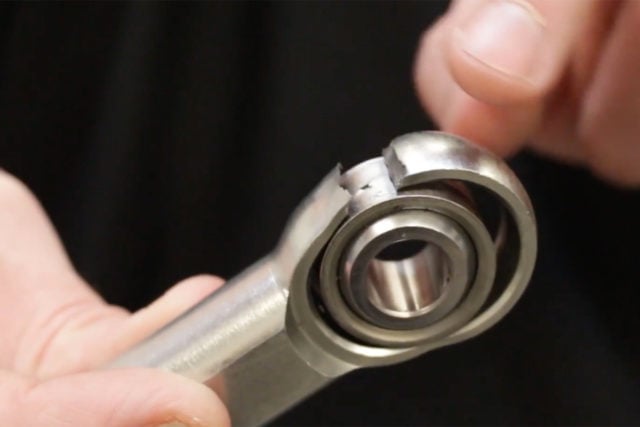
QA1 puts the rod end under so much stress they actually break it–don’t worry, they do this on purpose. Once the rod end breaks, they receive a graph which will verify that the rod end meets their minimum catalog rating.
“Those are the tests we perform on a daily basis to ensure that you get the quality rod ends that you would expect from QA1” says Beane. QA1 sells over 1.5 million units every year which serve a variety of applications from motorsports, agriculture, industrial, and more. With one of the largest selections in the industy, customers are sure to find the proper rod end that will meet their needs and exceed expectations.


